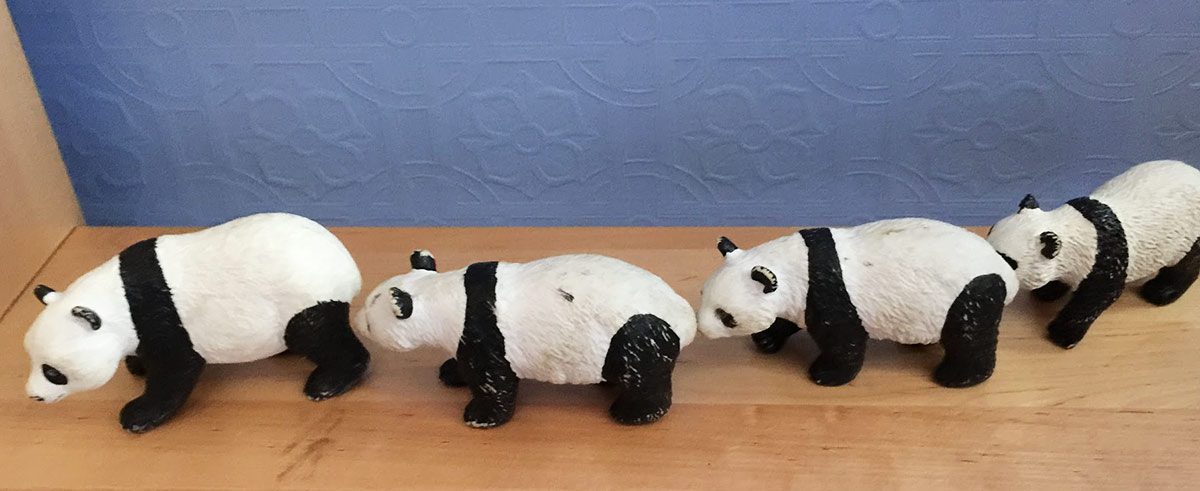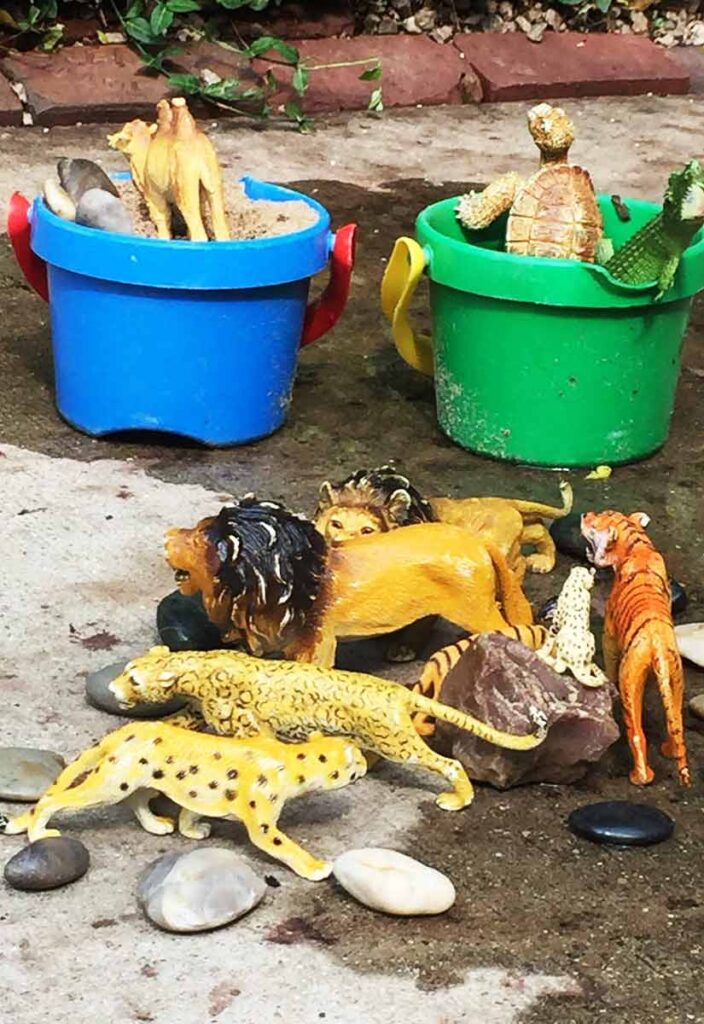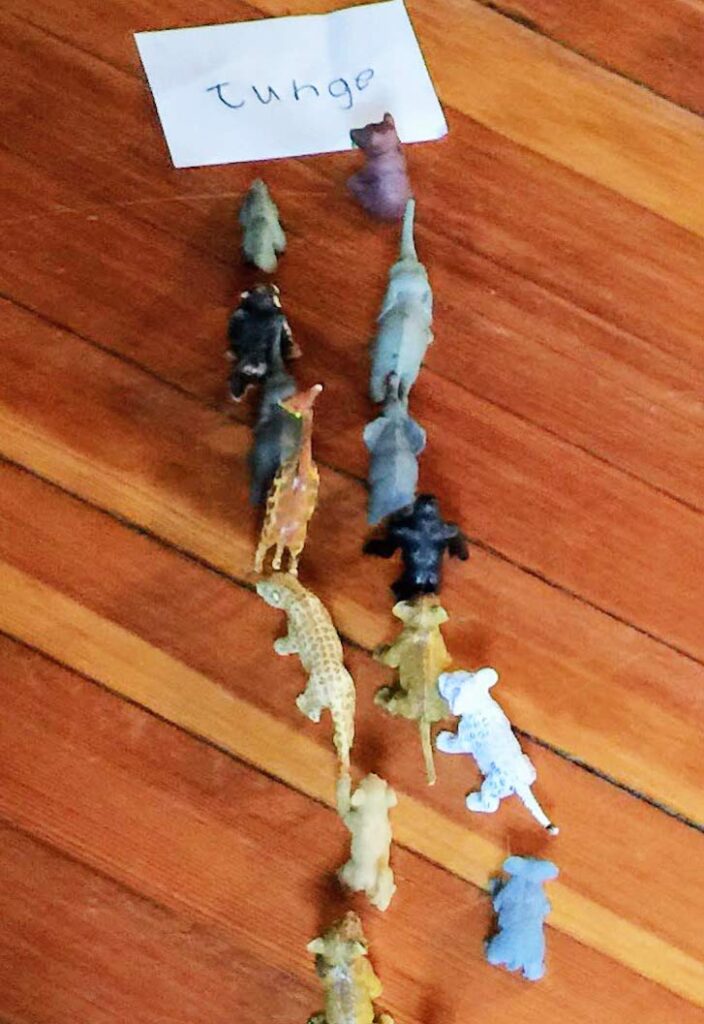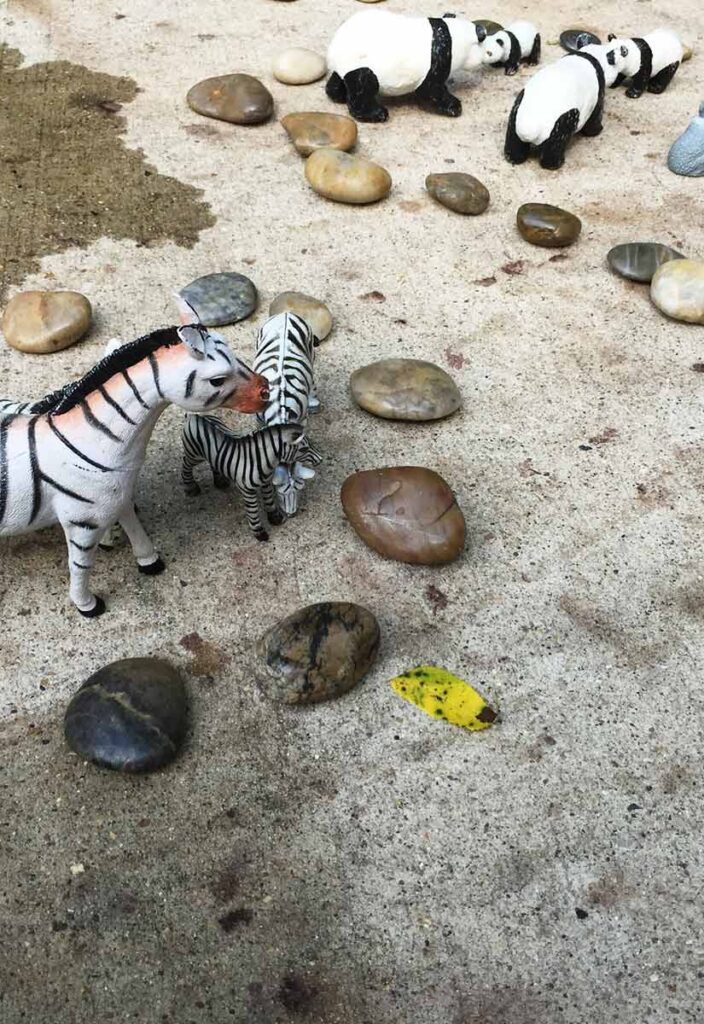Where are the Animals?
Introduction
With just one basket of toy animal figures, children can engage in creative, imaginative play while developing their math, reading and problem-solving skills.

Gather Materials
- Animal figures or playsets
Note: Small parts pose a choking hazard and are not appropriate for children age five or under. Be sure to choose lesson materials that you feel are safe for your child and that you are comfortable letting your child use.
Activity
Research shows that animal figures are the toys most likely to stimulate creativity, imagination, social interaction and verbalization in preschool children, regardless of gender or background.
A basket of toy animals comes without rules or directions, so the possibilities are endless!
When children "walk" their toy animals across a table or floor and make animal noises, they are building language skills and verbalizing their thoughts.
Keep your animal figures in a small basket or tray for easy access. I like to keep them near our block area, but the sandbox, the bottom kitchen drawer or anywhere else that children can access them independently is good.
Observe how the children play with the animals and group them into different sets. One child may group them by size or color. Another will count them or set up habitats or zoos. Others may group animal families together or act out a story that they have read or heard in the past.
Remember when we first learned about sets in first grade and we were told to circle the apples, but not the oranges, on our math worksheets? Children can do the same thing with toy animals—but they get to set the rules. Hands-on play will beat a worksheet any day. What sticks to the hands, sticks to the brain.
When children play with toy animals, people figures or toy vehicles, they create elaborate make-believe scenarios and engage in rich verbal interchanges.
Perhaps best of all, they learn to play cooperatively with their friends. That's a lot of learning in one basket!


